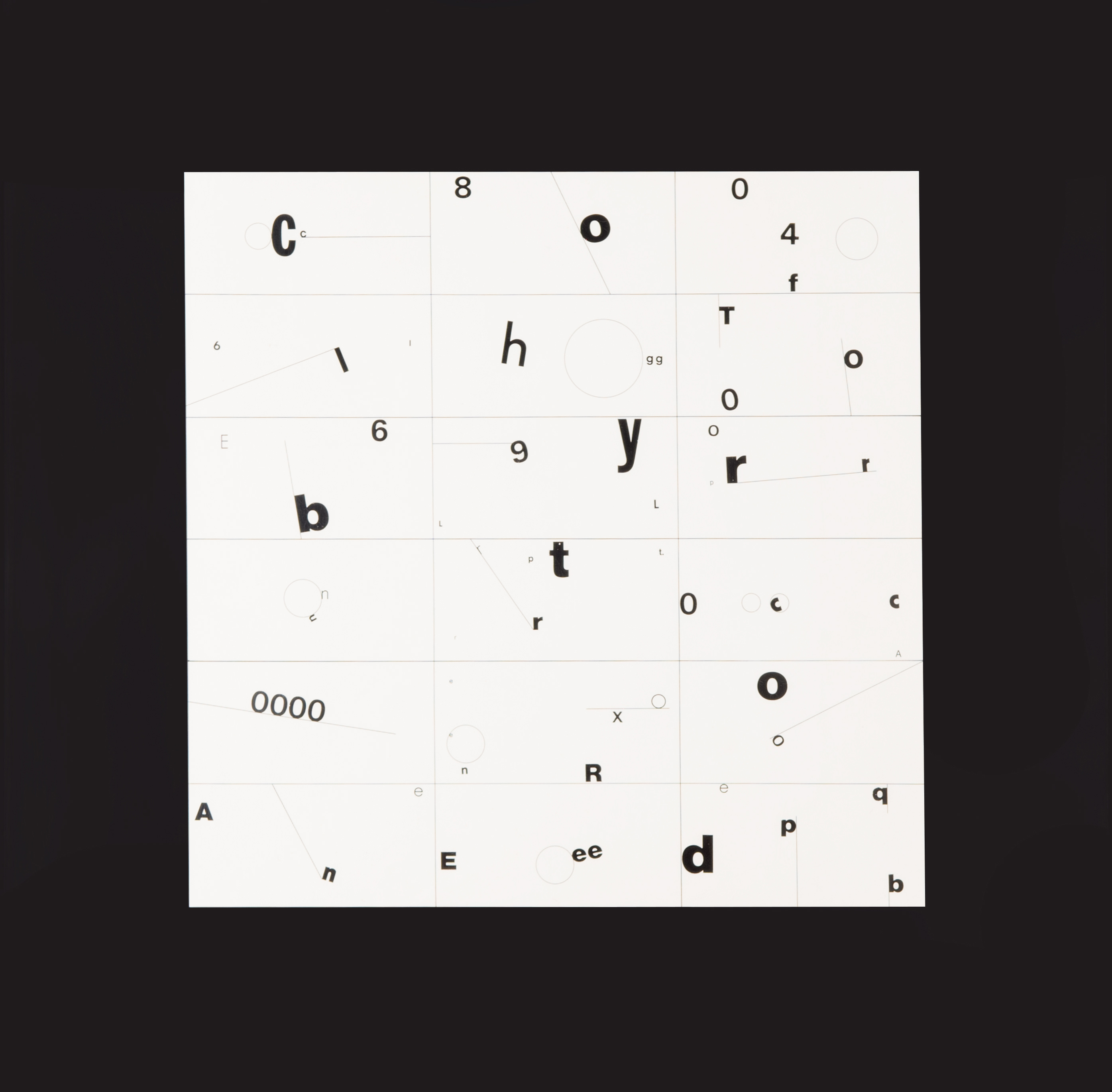Mira Schendel (born Myrrha Dagmar Dub) studied art and philosophy in Milan, Italy, but was forced to abandon her studies during World War II. In 1946 she settled in Rome and, in 1949, she traveled to Brazil, settling down definitively in São Paulo, in 1952. She produced still life paintings and, in the mid-fifties, began to experiment with textures and various media in a way that was compatible with informalism.
Between 1964 and 1966 she developed the series Institut für Moderne Kunst Nürnberg, drawings on Japanese paper produced by inking one side of the paper on a glass lamina, and using her nails or a sharp instrument to draw outlines, words or phrases on the other side. This was an attempt, as the artist herself indicated: “to congeal that moment in which the experience merged with the symbol.” This was the beginning of a vast work that used the written language as a graphical resource. Utilizing wrinkled Japanese paper which she manipulated forming thick fibers that entangled and tied, she produced Droguinhas (1966), three-dimensional pieces in which the support became a gesture and the language turned into the material. Both series were displayed at Gallery Signals, in London (1966).
During the second half of the sixties, Schendel produced several series of works in which printed or transfer letters and other typesetter signs were randomly placed on paper suggesting the impossibility of communication. Among these series, described as equivalent to concrete poetry, were Letras and Objetos gráficos. In the last of these series, begun in 1967, the paper was placed between two acrylic laminates so as to be visible from both sides. These works were followed by three series of images Toquinhos (1968-1974), the Cadernos (1970-1971) and the Datiloscritos (1973-1974). In the first series Schendel used acrylic and artisan paper as support, assembling acrylic cubes or making collages from colored paper and typesetter signs. In the mid-seventies she had a one-person show in Germany entitled Mira Schendel – Visuelle Konstrutionen und Transparente Texte (Institut für Moderne Kunst Nürnberg, Germany, 1974, and Studiengalerie der TH Stuttgart, Stuttgart, Germany, 1975).
In the second half of the seventies, Schendel made drawings that were ambiguously situated between figuration and abstraction. Among these series were Paisagens noturnas (1975), Paisagens de Itatiaia (1978-1979) and Mais ou menos frutas (1983). In the first series she used dyed papers, watercolor or tempera and letters drawn or applied to suggest forms of landscape. In the last series, which represented Schendel’s return to still life, she drew fruits in a schematic flat form one after the other as if they were signs. In the middle of the eighties, Schendel experimented with materials like plaster, silver and gold laminates on wood in geometrically formal works that were at the same time informalistic in the material sense. Adding light and wood stripes sticking out and invading space, she created one of her last series, Sarrafos (1987). These works that were located in an ambiguous position between painting and sculpture. In posthumous homage her work has received international recognition and has been shown in numerous individual and collective exhibitions, including the XXII Bienal de São Paulo (1994).
